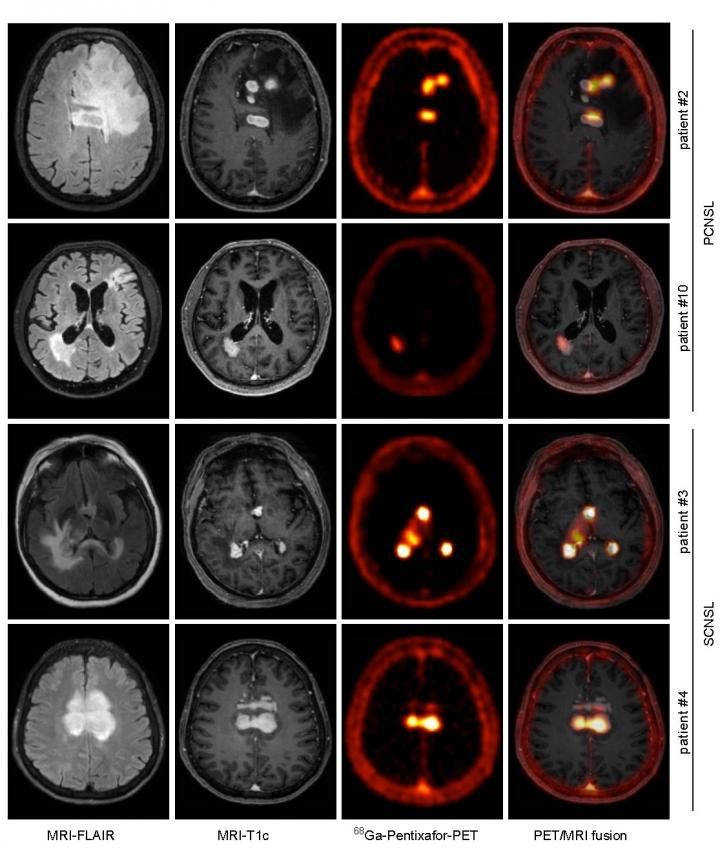PET Tracer Could Help Manage Rare, Difficult-to-Diagnose Lymphoma
68Ga-pentixafor can clearly distinguish between healthy and malignant tissue on both CT and MRI scans.
PET imaging tracer 68Ga-pentixafor can effectively distinguish between lymphoma lesions and healthy tissue when diagnosing central nervous system (CNS) B-cell lymphoma, a new study has revealed.
In the December issue of the Journal of Nuclear Medicine, investigators from the Universtitätsmedizin Berlin in Germany showed that this tracer effectively shows the distinct contrast characteristics between healthy and malignant tissue, making it suitable for risk stratification and assessment.
This discovery is important, said Ulrich Keller, M.D., Ph.D., head of the hematology, oncology, and tumor immunology department, because CNS B-cell lymphoma is a tricky disease.
“CNS B-Cell lymphoma is a rare malignancy that has several clinical challenges, including diagnosis, risk stratification, and optimization of treatment,” he explained. “Magnetic resonance imaging (MRI) is the current standard imaging technology for this disease, and while it provides high sensitivity, it offers only moderate specificity.”
CXCR4-directed PET correlates with MRI-determined lymphoma lesions. Depicted are representative MR images (T1c- and FLAIR- sequences), and the corresponding CXCR4- directed PET images and fusion images (MRI-FLAIR and PET), of two patients with PCNSL and SCNSL, respectively. Courtesy: Department of Nuclear Medicine, School of Medicine, Technische Universität München, Munich, Germany

Consequently, he added, novel molecular and functional imaging strategies are needed for this patient group.
For more coverage based on industry expert insights and research, subscribe to the Diagnostic Imaging e-newsletter here.
The 68Ga-pentixafor tracer targets CXCR4, the biomarker that is involved with growth, survival, and dissemination of aggressive B-cell lymphoma. To determine its efficacy, Keller’s team conducted a retrospective study with 11 patients who were imaged with the tracer. Four underwent PET/CT, and seven had PET/MRI scans. Post-treatment MRI scans in those seven patients was used to compare treatment response between pre-treatment MRI and the CXCR4-directed PET scans.
The team analyzed the lesions and conducted immunohistochemistry, and they discovered the CXCR4-directed PET imaging with the tracer was positive in all active CNS lymphoma lesions, and that expression was validated in vivo by positive immunohistochemistry. In fact, the high tumor-to-background provided exceptional contrast, the team reported. In addition, for nine of the patients, CXCR4 was highly expressed in biopsies of the lymphoma lesions
The prognostic value of the CXCR4-directed PET uptake values were also significant, indicating that lesions that had lower uptake values were associated with better standard treatment responses.
These results could have positive effects on patient outcomes, said Peter Herhaus, M.D., hemato-oncologist from the internal medicine department at the School of Medicine at Technische Universität München in Germany.
“This is significant for CNS B-cell lymphoma patients, as CXCR4-directed PET imaging with 68Ga-pentixafor could not only facilitate diagnostic work-up and response assessment, but [it] could also serve as a biomarker for selecting patients with dismal prognosis who could benefit from more intense treatment options,” he said. “CXCR4-targeted theranostics, thus, moves nuclear medicine further on the track toward biomarker-informed molecular medicine.”
Study with CT Data Suggests Women with PE Have More Than Triple the One-Year Mortality Rate than Men
April 3rd 2025After a multivariable assessment including age and comorbidities, women with pulmonary embolism (PE) had a 48 percent higher risk of one-year mortality than men with PE, according to a new study involving over 33,000 patients.
Predicting Diabetes on CT Scans: What New Research Reveals with Pancreatic Imaging Biomarkers
March 25th 2025Attenuation-based biomarkers on computed tomography (CT) scans demonstrated a 93 percent interclass correlation coefficient (ICC) agreement across three pancreatic segmentation algorithms for predicting diabetes, according to a study involving over 9,700 patients.